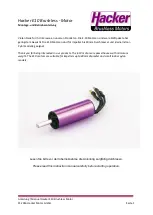
9
The three-way catalytic converter (TWC) stores oxygen
found in the exhaust gases and uses it to make toxic
gases less dangerous. The catalytic converter is a TWC
converter in which hydrocarbons (HC) and carbon
monoxide (CO) are oxidized and oxides of nitrogen
(NOx) are reduced.
As the TWC ages its ability to store oxygen drops.
This reduces the conversion capacity of the TWC. To
avoid dangerous emissions the ECM checks TWC ef-
ficiency. This check is carried out as follows.
The two-sensor method stereo makes use of one
upstream and one downstream oxygen sensor for each
cylinder bank, each bank has one sensor before the
catalytic converter (UHEGO) and one after (HEGO).
Rich and lean lambda pulses are sent through the
TWC. For a TWC with good gas converter and large
oxygen storage capacity, it will take a long time for the
rich/lean pulse to reach the rear oxygen sensor. The
rear oxygen sensor will then have long rich and lean
pulses and a long time between switches. When the
TWC detoriate and oxygen storage capacity drops will
the rear oxygen sensor switching frequency increase.
The rear oxygen sensor voltage will be used to calcula-
te a test value of the TWC performance and a malfun-
ctioning TWC will be detected by OBD II
system.
Enable condition
Minimum
Maximum
Ambient pressure
74 kPa
Vehicle speed
0 km/h
655 km/h
Catalyst temperature
550°C
1000°C
Typical catalytic converter diagnostic enable conditions
Malfunction criteria
Threshold value
Accumulated signal fluctuation on
secondary O2 sensor during A/F
modulation (shift from lean to rich
/rich to lean)
Bank 1 > 22.5
Bank 2 > 22.5
Typical catalytic converter malfunction thresholds
DTCs
P0420 - Catalyst System Efficiency Below
Threshold (Bank 1)
P0430 - Catalyst System Efficiency Below
Threshold (Bank 2)
21
22
Monitor Strategy description
High air flow monitoring
Catalytic Converter Monitor Operation
Corresponding MonitorID









































